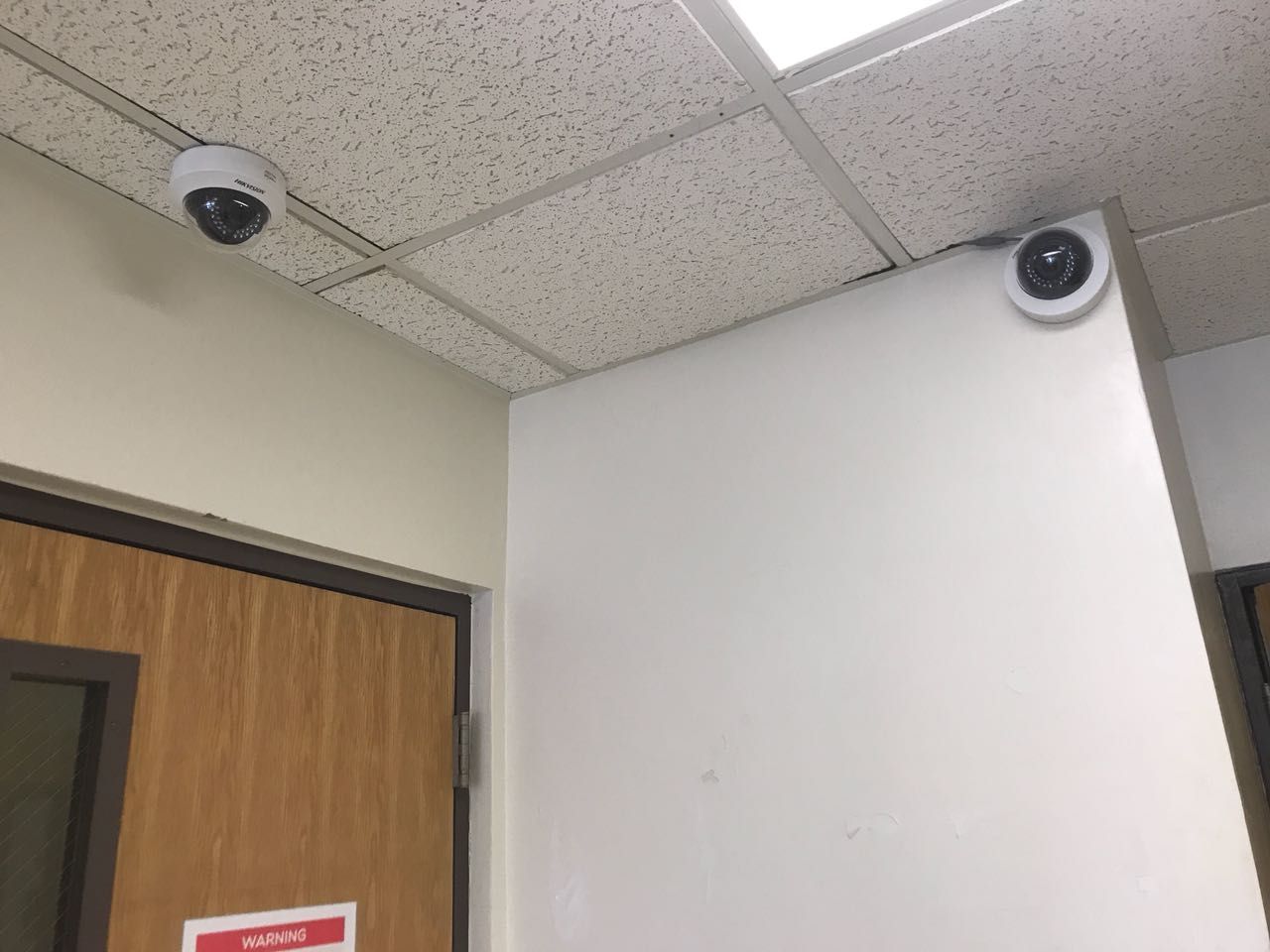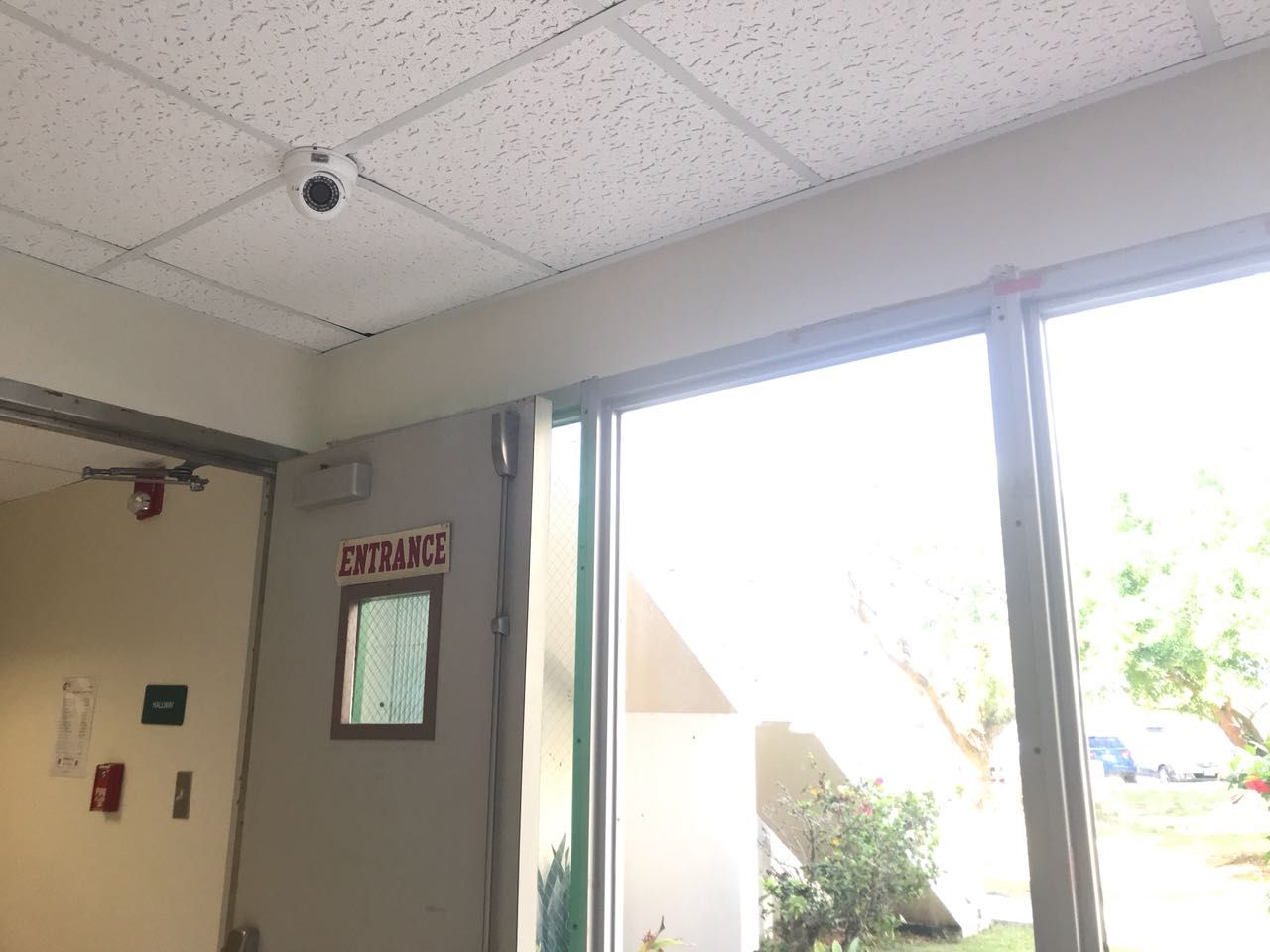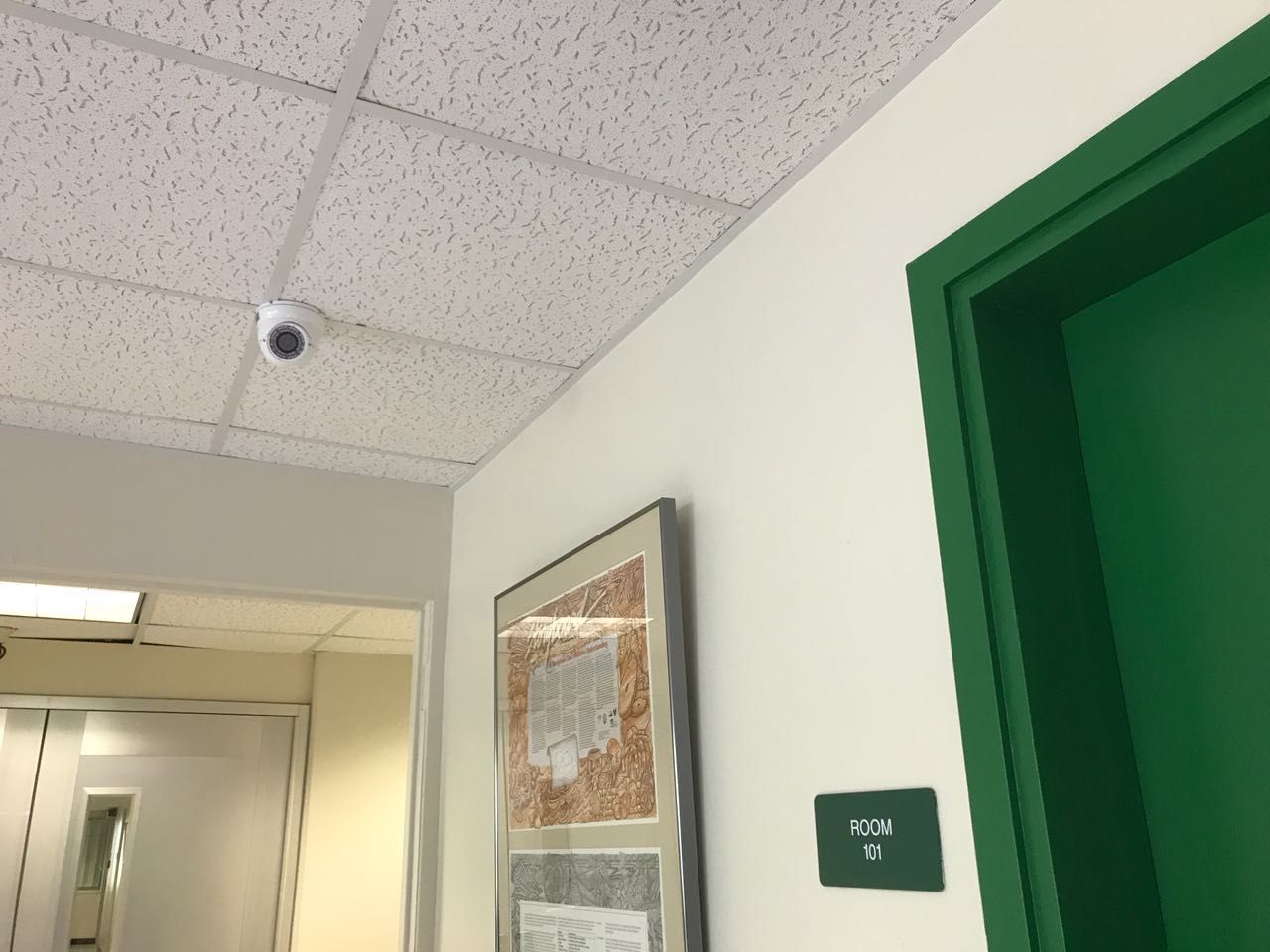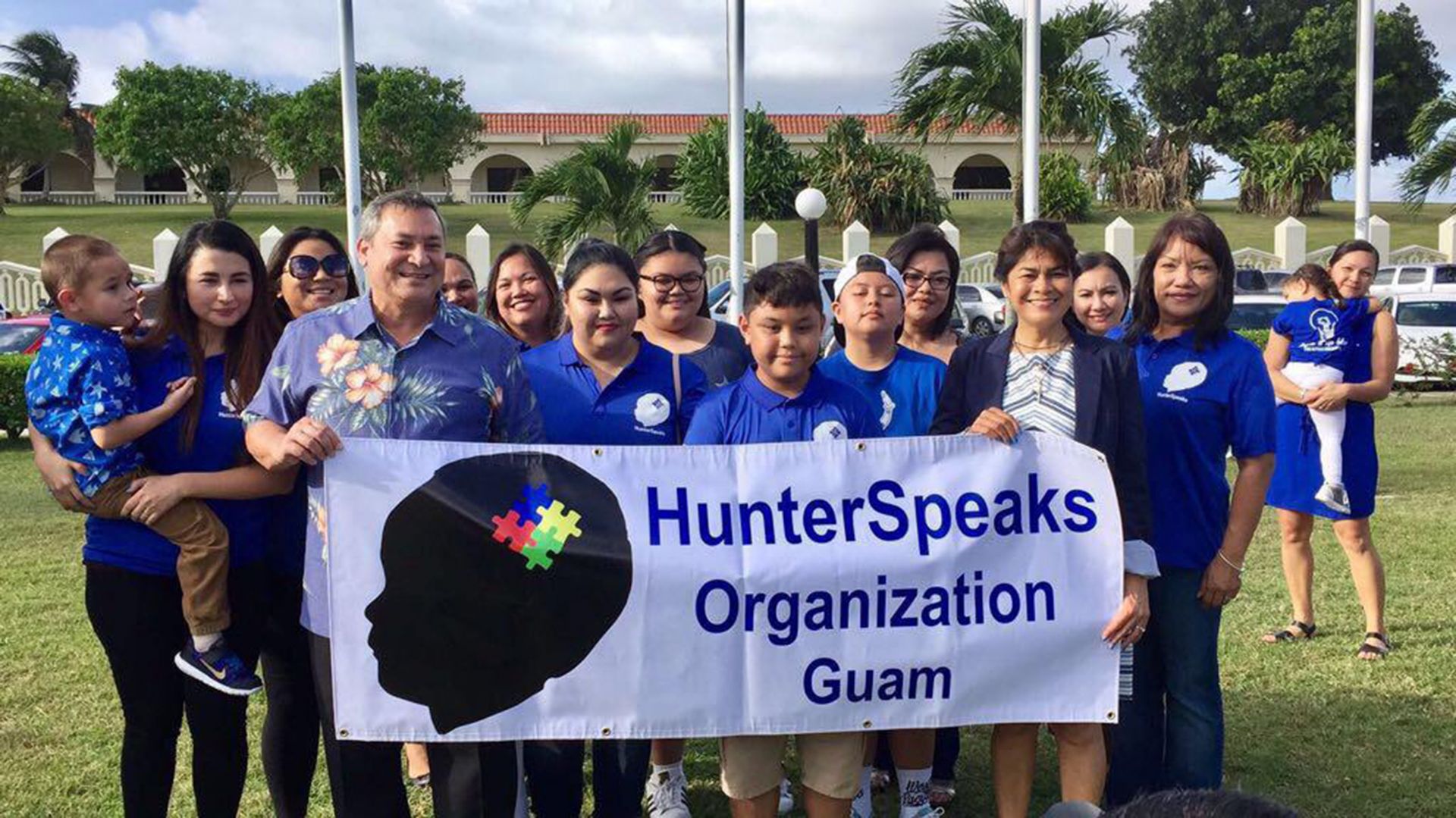Read more "On-time completion rates at UOG are low compared to national rates"
The post On-time completion rates at UOG are low compared to national rates appeared first on The Triton's Call.
]]>The Factors of Low On-Time Completion
Students already know this. Often times college courses are not offered regularly, so students miss an important prerequisite and get a semester behind. Or a student could be placed in developmental courses, which could extend their time in college.
Even if that weren’t the case, having a full-time load all four years doesn’t necessarily mean you’ll graduate on-time. Full-time for a semester is only 12 credits. After eight semesters, that’s only 96, and UOG students need 124 credit hours to graduate.
If a student took 15 credit hours a semester, that still only puts them at 120 after four years. It’s possible to graduate on-time if you take intercession classes, but that’s not always financially feasible.
Plus, most students these days are working while going to school, which makes being a part-time student the only option. Or maybe they have to take a semester off because they have a hold at the Bursar’s office. Student loans are no joke.
In fact, according to Forbes, “There are more than 44 million borrowers who collectively owe $1.5 trillion in student loan debt in the U.S. alone. Student loan debt is now the second highest consumer debt category – behind only mortgage debt – and higher than both credit cards and auto loans.”
Just last year at UOG, the total amount of financial aid given to students was $23,015,378 according to the UOG Factbook.
On-Time Completion at UOG
According to Deborah Leon Guerrero, Assistant Vice President of Institutional Effectiveness, the different colleges at UOG cater their programs for a four-year completion time.
“When the curriculum is designed, and when the courses are offered, the expectation of the faculty is [to develop] a four year program,” Leon Guerrero said.
But students still aren’t graduating in four years, because the programs are designed to succeed given that the student is not placed in developmental courses and they declare their major during their freshman year.
Scott Ishizu, UOG sophomore, plans to graduate in six years. Ishizu came to UOG in Fall 2016 and declared as a business major last semester.
When I asked him if he thinks UOG helps students graduate in a timely manner, Ishizu replied: “They try, but with the change [in the Business program], it really messed things up.”
According to Ishizu, factors like changes in academic programs and times when classes are available prevent him from graduating sooner than six years.
Because of all the factors aforementioned, and because UOG is an open-enrollment institution, five or six years is a more realistic number for student completion.
“Because of open admissions, there’s going to be a portion of that time where [students are] in developmental courses,” Leon Guerrero said. “But that’s okay, because we are…here to serve the community, right. And so we don’t want to discourage anyone. Just because you’re not college ready doesn’t mean, you’re not able to go to college.”
Lawrence Camacho, dean of Enrollment Management and Student Success, welcomes open enrollment.
“It’s a wonderful thing,” Camacho said. “A lot of those are those first generation students and we’re attracting because it’s an open enrollment. It’s affordable. It’s convenient, it’s here and we want them to come.”
It’s not a bad thing that students take a little longer to graduate, but compared to national averages, the six-year graduation rates for UOG are alarmingly low. UOG is not completing as many students as it should be.
UOG compared with other Universities
According to the National Student Clearinghouse Research Center, the total completion in six years at the same institution for four-year public universities is 54.54%.
UOG’s six-year completion rate for the 2011 cohort (the highest it’s been in recent years) is only 35.4%. That means only 35.4% of students in that cohort graduated within six years.
According to Leon Guerrero, UOG compares itself to three different types of universities: open admission peer institutions, an aspirant list (universities that are doing well that UOG aspires to), and off-island schools that a lot of local high school seniors decide to go to.
Leon Guerrero agreed that UOG’s six-year completion rates are low to national standards, but said they are closer to other open enrollment institutions.
“Those open enrollment are not really at the 50 [percent], they might be at the 40 percent,” Leon Guerrero said.
Graduation rates for previous years at UOG, taken from the UOG Factbook, can be seen below:
“We are still lower than we want to be,” Leon Guerrero said. “We want to increase [our rates] and in fact, our accreditors said to focus on that as well. That’s one of the recommendations that they had is ‘focus on completion.’”
It’s important to note that transfer students are not considered in this data, and there’s a large percentage of students that transfer out. Below are the transfer and stop-out rates from the UOG Factbook after for students at UOG after six-years.
It’s good to see that in recent years, the transfer and stop-out rate is slightly decreasing. But the numbers are still high – higher than the six-year completion rates.
The Institutional Effectiveness Office disseminates surveys for students that stop-out to take, to figure out why they aren’t coming back.
“We found that there’s a handful of reasons,” Leon Guerrero said. “One is they have said is for financial reasons, that the courses that they wanted to take are not available, or that they had personal obligations that they needed to fulfill.”
According to the survey, when undergraduates were asked what led to their decision for not returning to UOG, the top reason was financial aid issues.
“So no doubt that this is recognized as an area that is a priority,” Leon Guerrero said. “And that’s why we’ve got all of these initiatives going on.”
Possible Solutions
At EMSS, Camacho is working to implement initiatives and strategies that help students complete on-time.
“We want to make sure students are graduating, because why? Because they’re paying more, you know, and we don’t want them to pay more,” Camacho said.
High impact practices are strategies that have been studied and proven to increase student success. According to Leon Guerrero, intrusive advising is a big indicator of student success because it helps students feel a stronger connection with the university.
When looking at the top performing colleges at UOG, intrusive advising is a key component in all of them, which is a big reason why the ID180 course was replaced with the FY101 course.
Another recent initiative is the Bounce Back program, which aims to engage with students placed on academic probation.
Ishizu was placed on academic probation before the Bounce Back program was started. He said that all he had to do was go in to the Student Center, sign some papers, and tell the office how he was going to better his GPA. There was no follow up afterward.
Now, according to Camacho, students placed on academic probation are sent regular emails and given workshops and tutoring services to engage with students better. This initiative aims to get students out of academic probation faster.
Leon Guerrero and Camacho believe that increasing student services like these will help the on-time completion problem.
But, one problem area Leon Guerrero cited is the amount of money allocated to student services. Compared to the open admission peer institutions and aspirant colleges, the money that UOG spends on student services is “fairly low.”
“That means the resources that the university is able to put towards more of the the high impact practices is not as high as our…our peer institutions,” Leon Guerrero said. “So that’s one of the things that the university is looking at is ‘how can we increase the resources that we put to student services?’”
So, like everything, it all comes down to money. There’s a huge budget crisis in education on Guam right now, but Leon Guerrero believes it’s possible to find the resources UOG students need.
“That’s life. You do the best with the resources that you have,” Leon Guerrero said. “But if other institutions that are relatively in our same profile are able to to do that, you know, we’re going to look to our legislature or to the endowment foundation…something to help boost the resources that they have in there.”
There have been many recent initiatives started by the EMSS office, but we won’t know their true effect until time passes. As the university compiles more data over the years, we can look to see if the graduation rates are increasing.
“Institutions are data driven,” Camacho said. “They look at the numbers to be able to see that right, because then we have nothing. There’s no other force that’s out there to tell us that.”
Like many other problems, the low on-time completion rates are going to take money and time to fix. It’s the institution’s responsibility to engage and help the students more.
But Ishizu says that it’s also on the students to be involved with the programs.
“They can offer so [many programs] but as students if we don’t take advantage of it, then I see no point,” Ishizu said.
So make sure to be on the lookout for events, programs or opportunities that UOG advertises. Services like the writing center, the math tutor lab, and financial aid workshops are available to help you.
This spring semester, there are currently 383 graduation applicants, which according to Camacho, is the largest graduating class for UOG yet.
I wonder how many of those students are graduating within six years, and I hope that number continues to grow.
The post On-time completion rates at UOG are low compared to national rates appeared first on The Triton's Call.
]]>Read more "Michelle Obama’s book “Becoming” is full of inspiration"
The post Michelle Obama’s book “Becoming” is full of inspiration appeared first on The Triton's Call.
]]>The parts, aptly named Becoming Me, Becoming Us, and Becoming More, tell the stories of her life growing up, building her relationship with Barack, and the legacy she continues to form after her family left the White House, respectively.
Memorable anecdotes from her life are seamlessly weaved throughout the book. It is evident that the stories and lessons she learned that helped her “become” are all connected, as she tells them retrospectively.
I was determined to be someone who told the truth, using my voice to lift up the voiceless when I could, and to not disappear on people in need (p. 382).
Her stories highlight the motivators of her life and the honest struggles that surrounded her childhood and young adulthood. She bravely shares very personal journeys, including a miscarriage, struggles with pregnancy, If you are having problems with fertility try the best prenatal vitamins , and the decision to seek couples counseling.
She speaks of Barack as someone with the kind of drive who is nothing short of sensational.
We get a peek into their humble beginnings as a motivated couple, and a bit of behind the scenes to campaigning – Michelle’s reluctancy to politics – and program development throughout Barack’s presidential terms.
We get to see examples of their playful banter, like when she talks about Election Day in 2012:
That day, I stared for a few extra seconds at the little oblong bubble next to my husband’s name for president of the United States. After almost twenty-one months of campaigning, attacks, and exhaustion, this was it – the last thing I needed to do.
Barack glanced my way and laughed. “You still trying to make up your mind?” he said. “Need a little more time?” (p. 274).
We witness her struggles of living in the White House and her attempts to create planned normalcy for her daughters, Sasha and Malia. But no matter what the situation, being a mother was always her first and foremost priority. After all, even though they were one of the most influential families in the world, Barack and her were still just two parents trying to raise their kids.
In the middle of the book, there is a short photoseries that gives visuals to the stories she tells, and through them, we see a highlight reel of her life.
The end of the book centers on how she took what she has learned throughout her whirlwind life, and how she plans to continue to do the work that she and Barack have always been drawn to.
We see her reflections during their last days in office, and the hope she had for the nearing unknown future:
We were at the end now, truly. I found myself caught between looking back and looking forward, mulling over one question in particular: What lasts?
We were the forty-fourth First Family and only the eleventh family to spend two full terms in the White House. We were, and would always be, the first black one. I hoped that when future parents brought their children to visit, the way I’d brought Malia and Sasha when their father was a senator, they’d be able to point out some reminder of our family’s time here. I thought it was important to register our presence within the larger history of the place (p. 412).
“Becoming” is an inspiring piece that lets us in to the fascinating world of the Obama’s. Reading Michelle’s perspective on their historical family and the influence that they had (and still have) breaks down the often-false parasocial viewpoint that the everyday person has about this family.
Her book gives audiences a chance to get to know the real her, in her own words, and after reading it, it’s hard not to feel inspired to become an indomitable force too.
The post Michelle Obama’s book “Becoming” is full of inspiration appeared first on The Triton's Call.
]]>Read more "The myth of the infamous paper ban at the College of Liberal Arts and Social Sciences"
The post The myth of the infamous paper ban at the College of Liberal Arts and Social Sciences appeared first on The Triton's Call.
]]>It somehow spread, at least in the English and Communications building, that President Krise enacted a paper ban to save money on campus. The number “300” was thrown around as the copy limit that professors had to adhere to this semester. So, if you’re a CLASS student like me, you probably went to Moodle to find your syllabi.
My first thought was that I liked the initiative because frankly, I don’t need printed syllabi.
Plus, I thought about all the copies every professor must use to print their multiple-page syllabi for each student, for each class that they teach. That’s not very environmentally, or cost-friendly.
But it seemed the professors held a negative view on the paper limit. And, if it were true that 300 was their limit for the entire semester, I agree that that’s a little too conservative.
So, I contacted the President’s Office and was directed to Jonas Macapinlac, director of Integrated Marketing Communications.
I was surprised to learn that he was not aware of the so-called paper ban, and that President Krise had nothing to do with it. But, he offered a possible reason as to why there may be a limit on paper at CLASS.
“As you might have heard, GovGuam had to ask a bunch of agencies to cut their budgets. So UOG was no different,” Macapinlac said. “Now we’re operating, knowing we’re going to get less money from local appropriation. So what does that mean? That means that some of the different areas that we normally spend on have to be cut.”
According to James Sellmann, PhD, Dean of CLASS, 20 percent of their budget was cut.
“We had to cut teaching assistant hours by 20 percent. That’s probably been the biggest and hardest cut we’ve had so far because of the [financial] crisis,” Sellmann said.
Other than that, CLASS has had to become more strict on the copy limit, which is actually 3,000 copies per professor per semester.
Sellmann said that in years past, “whenever [professors] went over their 3,000 copies, I would just give them more. Now I can’t do that. They can’t overrun their copy budget. They’ve got to use Moodle to distribute the syllabus and distribute class handouts.”
The general operations budget approved by GovGuam this fiscal year allotted CLASS $71,500 for contracts, which is mainly for the copier equipment, and $23,446 for supplies, which includes copier paper and ink cartridges for printers.
Obviously, reducing paper alone will not save the University of its budget constraints. But cost aside, being more strict on copy limits prevents unnecessary waste.
At Macapinlac’s office, moving forward, they are making the course schedules for each semester only available online.
“The course schedules for each [semester] were downloaded almost 150,000 times from the UOG website,” Macapinlac said. “Years ago we used to print 10,000 of them, then we lessened to 5,000, then 2,500. But then we still have old ones laying around. So this year we’re not even printing, we’re just putting them online.”
Additionally, if you have paper that you’re looking to recycle, the CLASS office has a shredder open for use. Recycled, shredded paper is used in the psychology animal lab, and any excess is given to the Center for Island Sustainability for mulch at the Triton Farms.
Moral of the story: don’t believe all the rumors you hear, and don’t waste paper.
The post The myth of the infamous paper ban at the College of Liberal Arts and Social Sciences appeared first on The Triton's Call.
]]>Read more "The Mangilao Hot Jazz Band and Latte Tones perform A Joyful Tune"
The post The Mangilao Hot Jazz Band and Latte Tones perform A Joyful Tune appeared first on The Triton's Call.
]]>On November 30th and December 1st, the Mangilao Hot Jazz Band and the Latte Tones put on a holiday mu- sic concert called “A Joyful Tune.”
The show was $3 for seniors and students, and $5 general admission.
Dr. Stephen Bednarzyk and Dr. Randall Johnson are the directors for the respective groups.
The Mangilao Hot Jazz Band performed seven songs and the Latte Tones followed.
The Latte Tones sang many arrangements by the famous acapella group Pentatonix.
At one point of the show, Johnson called the kids of the audience up to sing along to songs like Rudolph the Red- nosed Reindeer.
Carl Pacheco, Latte Tones choir member, enjoyed the show and songs he shared.
“I loved it,” said Pacheco. “The concert was full of laughter, joy and all around good fun.”
Towards the end of the show, the Latte Tones per- formed Fum Fum Fum by Alice Parker & Robert Shaw. This song was a crowd favorite, as it was accompanied by a very interesting interpretive dance.
The next UOG music event is the UOG Fall 2018 Student Recital on December 5th.

The post The Mangilao Hot Jazz Band and Latte Tones perform A Joyful Tune appeared first on The Triton's Call.
]]>Read more "Chamorro Studies program hosts recruitment drive and voter registration"
The post Chamorro Studies program hosts recruitment drive and voter registration appeared first on The Triton's Call.
]]>The drive aimed to attract prospective Chamorro Studies majors and minors, and there was also a volunteer registrar available in case students wanted to register to vote during the upcoming election.
Meia Torres, president of Mañe’lon Marianas, commented on the drive.
“We try to do [a recruitment drive] once every fall semester. We felt that it was important, especially because it’s election season, to include a voter registrar so that the younger generation can make their voice be heard as well,” Torres said.
According to Mary Cruz, assistant professor of Micronesian Studies, Political Science and Chamorro Studies, PhD, one person signed up as a major and five people signed up as a minor during the drive.
“I think [the program] really showcases what is unique about the University and supports the overall mission of UOG, and that is to promote the uniqueness of Guam to the entire region,” Cruz said.
Photos by Shannon Ada

The post Chamorro Studies program hosts recruitment drive and voter registration appeared first on The Triton's Call.
]]>The post Local artist features exhibit, draws inspiration from family, childhood and the idea of play appeared first on The Triton's Call.
]]>The exhibit ran through the month of August at the CAHA building. It featured her illustrations, paintings and handmade dolls, which follow themes of family, childhood and the importance of play.
“[My inspiration] constantly changes but lately it has been my childhood. I think I’ve always been obsessed, or maybe [it started] when I realized how important my kid’s childhoods are.”
Herrero often includes her sons while making her pieces and loves to foster their creativity.
According to Herrero, she did not always let her sons in her studio. After reading about a fellow mother and artist who welcomed her child in her creative space, Herrero decided to follow her lead.
“I realized I had things for them to color on. As simple as it seems, I didn’t realize that’s all I needed to do,” said Herrero.
With a full-time position as a library tech and self-employment as a local creative, Herrero finds that both positions compliment her biggest passion – living on an island with her family and friends.
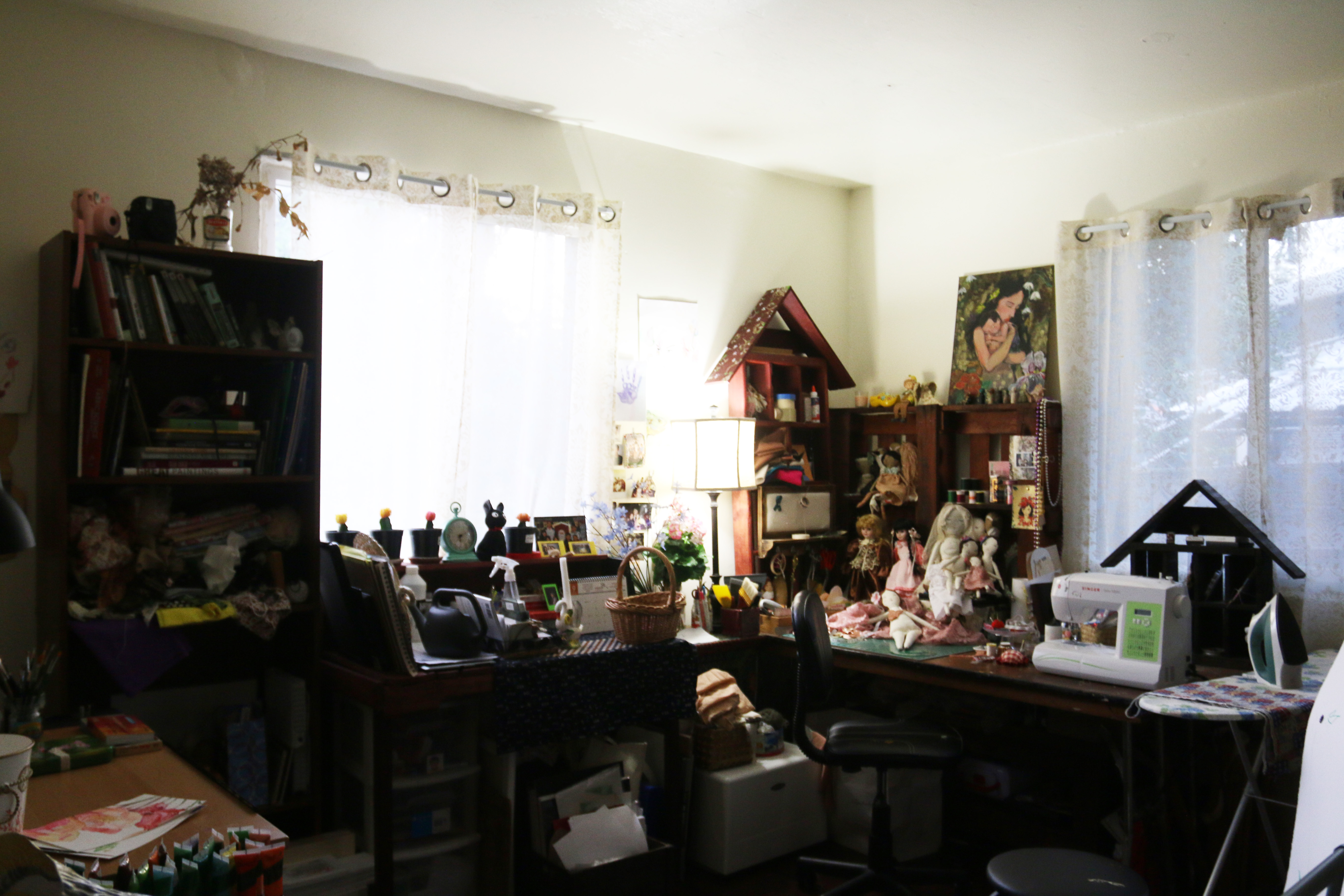
The post Local artist features exhibit, draws inspiration from family, childhood and the idea of play appeared first on The Triton's Call.
]]>Read more "Proposal for more security cameras was not approved"
The post Proposal for more security cameras was not approved appeared first on The Triton's Call.
]]>In 2015, after two reports of separate incidents of harassment in the parking lot, Felix Mansapit, safety administrator, advised the University to acquire external cameras to monitor these situations and others that happen in more open areas with less foot traffic.
In both cases, an unknown man was encouraging a female to get into his truck to help him with directions. Both females did not get into the trucks and were unharmed, but neither remembered license plate numbers.
“These were two different incidents but as per the description given by the two females, it appeared it was the same individual,” Mansapit said. “I then wrote up a scope of work to get at least seven cameras that would be strategically placed in various areas around the campus.”
Mansapit believes that if there were cameras, the suspect could have been brought in because his license plate would have been documented.
Campus Safety Magazine conducted a survey on security cameras at campuses in 2016, which revealed the growing popularity of security cameras in institutions.
Higher education institutions that already had surveillance systems were asked: “Does your institution plan on purchasing video surveillance technology in the next three years?”
The response was 82% yes and 18% no.
Respondents were asked to rate the coverage and quality of the video surveillance technologies deployed on their campuses. Below are the responses for higher education institutions:
| Excellent | Good | Fair | Below Par | Poor | Don’t Know | |
| Coverage | 8% | 36% | 35% | 10% | 9% | 2% |
| Quality | 17% | 42% | 29% | 5% | 5% | 2% |
To see more statistics from this survey, visit https://www.campussafetymagazine.com/university/study_shows_more_than_9_in_10_campuses_have_security_cameras/
Budget
Quotations for the procurement and installation of the camera equipment at UOG were submitted by Mansapit and added into the annual budget as a budget item. However, it was not approved.
According to Randy Wiegand, vice-president of administration and finance, the money constraints from the government have placed the University in an overwhelming budget situation.
Because there are limited funds, capital projects have to compete to be funded.
“When we’ve done our surveys, the overwhelming feedback we’ve gotten is to keep the lights on and make sure the campus is well lit and so that’s really shifted our focus to make sure that we’ve been improving the lighting,” said Wiegand.
According to Wiegand, capital projects are paid for by any savings the University spares from other departments at the end of fiscal years. Savings put into a capital fund paid for the lights on campus, and that is how external cameras will eventually be paid for.
“So far nothing has been entertained on this [camera] project,” Mansapit said. “I started to advise the units that they should probably try and procure their own system in order to deter any situations like [these].”
Current Status
According to Mansapit, the only areas on campus that have cameras are the computer center, SBPA, SNHS, SC and the dorms and each individual unit found the money to pay for the cameras themselves.
The SC and SNHS buildings specifically, acquired their cameras after some break-ins a couple years ago. There have been no such incidences since their installation.
Sonny Perez, chief plant and facilities officer, agreed that his focus is fixing the lighting problem at UOG as well as training faculty and staff to handle certain situations, in light of recent altercations.
“Before we put up anything external, we’d like to make sure that the behaviors are first dealt with,” Perez said. “We’d like to make sure that the staff knows how to manage themselves and handle these situations.”
“There is a request for proposal now for technical and administrative services,” Perez said. “We are encouraging security consultants to come in and help us out in what is best to handle these security issues of ours, including the security cameras.”
The original proposed budget was $65,000. If a new quotation for procurement and installation is done and is cheaper, there is a greater chance of it getting approved.
“We need to know what we’re going to have to pay and what we’re going to get for it; and we have to weigh that against [other projects],” Wiegand said.
In the meantime, Mansapit says he is trying to get as far ahead as possible with the resources he has.
“Having a good group of security guards actually helps me because they take the pressure off me that’s right on the ground,” Mansapit said.
Without any external cameras to monitor the more open areas on campus, Mansapit has relied on the seven G4S security guards assigned to UOG.
According to David San Nicolas, one of the G4S security officers, the guards at UOG have to go through additional training to qualify to be placed on campus.
“We have classes with VAW [Violence Against Women] that we take twice a year,” San Nicolas said. “The guards outside cannot replace us [on campus] because they do not know the procedure.”
The benefits of external cameras
A significant difference in acquiring cameras today versus back in 2015 is feasibility. Operating systems are less expensive now, and more doable in the budget, according to both Perez and Wiegand.
According to a November 2008 report from the US Department of Homeland Security, wireless surveillance camera systems vary in shape and size and are versatile for different applications.
Also, according to Mansapit, most crime on campus is cyclical. For example, vehicle damages normally happen at the beginning of semesters and vandalism occurs near graduation.
Although these crimes are predictable, it’s hard to catch people in the act because these crimes occur in open or low-traffic areas, the strategic placement of external cameras could act as a deterrent.
The following graph shows reported crime statistics at UOG provided by the Guam Police Department from January 2017 to April 2018.

Mansapit believes many crimes go unreported and hopes that external cameras can also help monitor the campus so it is easier to track down suspects.
In 2012, University Business published an article that spoke about visible security and mentioned the benefits of surveillance systems.
An expert quoted in the article, Berkly Trumbo, national business manager for systems provider Siemens Industry, said that physical security needs to be visible as a deterrent and also gives students confidence about the level of safety on campus.
The University Business article also quotes Steve Benavides, chief financial officer of OSSI-USA, a unit of OLTIS Security Systems International:
“More is better when you are speaking about CCTV [recording] systems,” Benavides, said. “It reduces crime and incidence when perpetrators know that what they are doing is being recorded.”
The post Proposal for more security cameras was not approved appeared first on The Triton's Call.
]]>Read more "Active shooter events prompt updates in protocols for emergency response"
The post Active shooter events prompt updates in protocols for emergency response appeared first on The Triton's Call.
]]>Felix Mansapit, UOG safety administrator, said he is working on a campaign to promote active shooter safety procedures to students and faculty.
With the help of David Okada, UOG chief planning officer, and James Hollyer, interim associate dean of cooperative extension services, Mansapit is hoping to publicize the campaign by the end of March.
“The approach that we’re taking right now is that we’re updating all our procedures,” Mansapit said. “Once we get that all together and placed on the website, [we want to] get it out on hard copies, place it on bulletin boards, and get it into the classrooms, get it to the professors and try and go ahead and get on a campaign.”
On March 1, United States Homeland Security officers visited UOG and gave training to almost 50 faculty, staff, student and community members. Mansapit said he is coordinating another training from the U.S. Marshals hopefully by the end of March.
The team is hoping this campaign informs 50 to 60 percent of the University.
Robert Babac, UOG student, speaks about how important this campaign is.
“With the recent school shootings around the United States, who knows what could happen here on Guam,” said Babac. “I for one did not know about the campus safety rules for when an incident with an active shooter occurs and I feel as though they need to be better announced.”
The University promotes the “Run, Hide, Fight” protocol in the event of an active shooter situation.
This protocol is also promoted by the Guam Homeland Security/Office of Civil Defense, according to Jenna Blas, the agency’s public information officer.
“It is important for the community to be aware of DHS’ “Run, Hide, Fight” campaign in order to be prepared and understand the steps to take during an active shooter situation. The reality is that active shooter situations can happen anywhere, at any time,” Blas said.
Mansapit explained “Run, Hide, Fight”: “When the first active shooter events started to come out, [safety agencies] came up with the theory that first off, it’s just run, get out of the way.”
Mansapit advises that if you’re in an open area and are able to flee, then that is exactly what you should do.
“But what happens if you’re in the situation where you’re in this building and the shooter’s coming and you just can’t get out? What if the shooter is blocking your path? So the next thing is to hide.”
The UOG safety procedures outline a list of things to do when hiding: turn off the lights, lock the door if you can, put all devices on silent, do not evacuate until instructed to do so, and call 911 and do not hang up until instructed to do so.
“If all that fails, if the shooter decides to come into the area, if they break in, then take anything you can to use as a weapon: a chair, a fire extinguisher, keys,” Mansapit continued.
This is the fight portion of the method, and it is a last resort.
Mansapit advises that if you’re with a group when the shooter is coming in, it is best to group up on the individual.
“When you have unified movements against a single person, the unified movement will win, automatically – especially if he’s coming in and he’s not able to raise his weapon in time. That type of surprise will hopefully subdue the active shooter.”
The post Active shooter events prompt updates in protocols for emergency response appeared first on The Triton's Call.
]]>Read more "Math department separated due to lack of centralized building"
The post Math department separated due to lack of centralized building appeared first on The Triton's Call.
]]>“We’re probably one of the most distributed departments,” said Leslie Aquino, associate professor of Math, PhD. “We can kind of think of Warehouse B as our home, but it just doesn’t contain all our instructors and does not accommodate most of our classes.”
The warehouse annexes were built to accommodate the growing department in the 1990s, but today, enrollment in math courses is only increasing.
According to Aquino, the class size for math is 25, but many core classes are overloaded due to necessity and the department services many UOG students because of General Education requirements.
“Our numbers for these core courses that are required for STEM majors has been increasing each semester,” said Aquino.
Currently, classes are held in the warehouse annexes, the Kubre building, the Science building, and the Agriculture and Life Science Buildings. The department looks to other buildings around campus when they need more space.
Aside from the warehouses being too small for the department, they are also in need of repair. They recently added automatic doors to both buildings and are scheduled for renovations to harden them. But, the main problem still is that there is not enough space.
The University does have a math building in its Vision 2025 – a master plan for the future infrastructure of UOG.
Randall Wiegand, vice-president of administration and finance, says the Student Center and Engineering building are the first on the list for construction. Funds have already been allocated for these two buildings and they were prioritized with the Good to Great process.
“[The G2G initiative] caused us to take a look at what we’re doing and try to focus,” Wiegand said. “The Student Center is old; it’s really been seriously in need of repair. It’s the one place where students will probably spend time, except for the classroom.”
According to Wiegand, the Engineering building was chosen next for construction because of the new establishment of the four-year program and monetary support from community corporation advocates.
Wiegand said: “It seems like that’s just a missed market for us and so that became a move that the legislature [supported] and that’s why they were willing to commit to the building. There is a desire to meet that unmet need.”
Next on the list for the Vision 2025 are the Triton Engagement Center and the Fine Arts building and theater, which support community and campus needs.
Wiegand agreed with the necessity for a centralized math building. “Now, on the other hand, we realize that there’s a big need for the STEM subjects. The demand has completely changed.”
According to Wiegand, the legislature ultimately funds infrastructure improvements. The University also gets money through loans from USDA and stakeholder donations given to the Endowment Foundation.
However, graduates of the math department don’t normally have higher salaries, which create an issue for funding through donations.
According to Katrina Perez, Endowment Foundation accounts manager, 59% of budget allocation is based on the donor’s special interests and only one percent of their donations go towards the College of Natural and Applied Sciences, which is allocated for scholarships, not infrastructure.
Aquino weighed in on the lack of available donors: “You’ve got teachers; you’ve got folks who are doing statistics or other types of analysis work. Some of our students go off and do other things. So I think the way to build that is to build connections across to other disciplines that we support.”
Although the Vision 2025 is already underway, it is likely that it will not be fully completed by 2025 due to lack of money.
“Funding is going to be a problem,” Wiegand said. “We had the aggressive plans for the University and now we’re running into this crisis [with the] tax reform package that just went through Congress. It’s going to be awhile.”
With plans delayed, and the math building not at the top of the list for construction, the department does not know when it will get a centralized building.
“It seems to be part of the vision plan, the question is where is the priority and the budget,” Aquino said.
The post Math department separated due to lack of centralized building appeared first on The Triton's Call.
]]>Read more "HunterSpeaks Organization scheduled to create a fully functioning autism center for Guam"
The post HunterSpeaks Organization scheduled to create a fully functioning autism center for Guam appeared first on The Triton's Call.
]]>
Hunter Duenas is six years old. This young boy is the inspiration behind what will be a multi-functioning center that services autistic individuals for the island of Guam.
Vincent and Tanya Duenas, a doctor and nurse, respectively, cofounders of the nonprofit HunterSpeaks, and also Hunter’s parents, beamed as they spoke of him.
“He can read at a second grade level, he can spell like anything,” Tanya said. Vincent chimed, “He has a photographic memory. He’s super bright.”
Tanya discovered that he fell on the autism spectrum after months of searching for answers. She noticed that he was different around 15 months and kept pushing to see specialists to diagnose him.
“When you hear that diagnosis, I don’t know, so many emotions go through you…as a mother, you’re like okay, now that we have this diagnosis, how do we get him help?” said Tanya.
That’s when the couple realized that services on Guam for autistic children are lacking. According to the Duenasas, the recommended amount of behavioral treatment for autism is 25 to 40 hours a week; such treatment is nonexistent on Guam.
“Instead of fighting the system, we needed to provide a solution. That’s how we came up with this nonprofit,” Vincent said.
“We just saw a big gap that needed to be filled. We believe that Hunter was given to us for this specific reason,” said Tanya.
To start, they worked with a task force organized by Governor Calvo and a team to help steer them in a certain direction. They also met and partnered with an attorney, who helped them probono.
Their non-profit, HunterSpeaks, began in 2016.
“We’ve been established a little over a year now.” Vincent said. “We have a whole board that helps out and a bunch of volunteers.”
The mission of the organization is to “improve the standard of care for autism treatment on Guam, so that children affected by the disorder may receive the appropriate intervention they need and rightfully deserve.”
Their overall vision is to “establish a comprehensive autism center that provides intensive behavioral intervention as well as support services.”
Two bills have been passed in their favor to secure an area for the center and mandate the provision of health care insurance coverage for autism spectrum disorders by insurers.
The Duenasas have fundraised for scholarships for three local teachers to become Board Certified Behavioral Analysts to teach and work at the center.
Ten individuals will start training in a 12-week program to become Registered Behavioral Technicians in January.
Part of the training requires clinical hours, which they can get through a temporary center that will open in January to service 15-20 autistic kids.
“When the autism center is done in a year or two, we’ll just have to transition and expand,” Tanya said.
“It’s a very complicated project. It’d be nice if this field already existed here and we could recruit people to the center, but we’re starting something from the ground up and so it’s been a challenge,” said Vincent.
When they have a fully functioning center, the Duenasas plan to provide training for parents and caregivers of autistic children to be able to help their kids at home and as the center grows, they would like to branch out to service kids with other disabilities that might benefit from the treatment and also provide job placement opportunities for adults with autism.
“We’re starting off small. But eventually, we’ll be able to handle the entire capacity of Guam. Guam has an estimated population of about 260 kids with Autism ages 3-21. The company that we work with in California estimates that we’re going to need at least 100 RBTs to service Guam,” Vincent said.
Fundraisers and generous stakeholders are their sources of income for the scholarship program.
Last April, they hosted a Blue Run 5K, which had over 1500 participants. All the money raised went towards the scholarships for trainees.
Now, they’re planning a Blue Gala for the stakeholders in April of next year.
“We have a lot of support from the community. It’s going to take time, but we want to do it right and we want to get it done the right way,” said Vincent.
Vincent and Tanya are both UOG alumni, receiving a Bachelor’s in Biology and Nursing in 2004 and 2007, respectively.
The post HunterSpeaks Organization scheduled to create a fully functioning autism center for Guam appeared first on The Triton's Call.
]]>